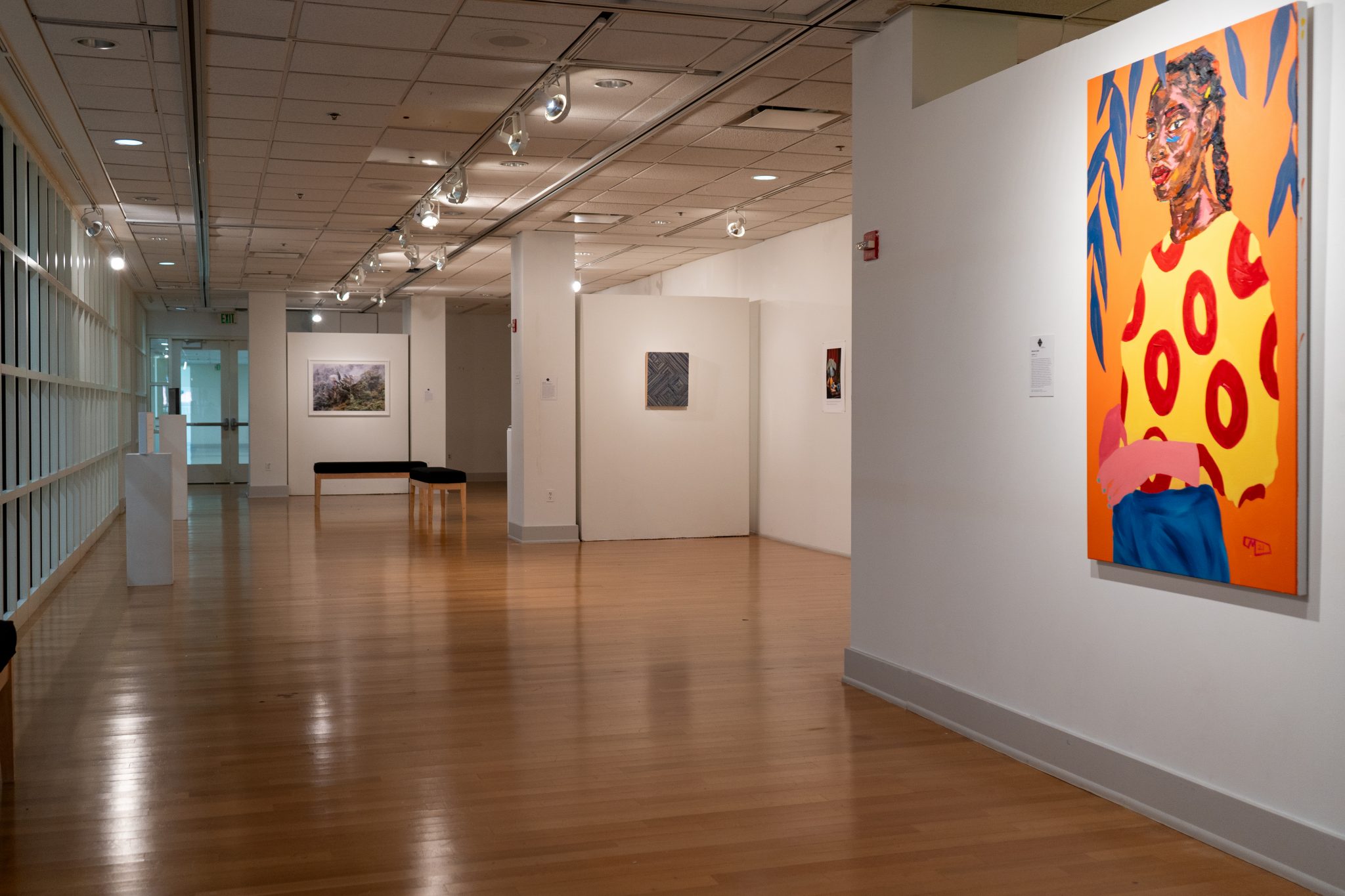Stamp Student Union Gallery’s “What We Do After” exhibit is here and highlights important social issues impacting the University of Maryland community using art installations. Self-image, climate change, gender expression, womanhood and community loss are all topics the works explore.
Located on the first floor of Stamp, the exhibit is free and open to the public.
Featured at the front of the exhibit is a portrait by Megan Lewis titled “Together.” Lewis redefines the meaning of traditional beauty in her piece, drawing inspiration from her experiences as a Black woman and helping bring representation to historically marginalized groups.
Lewis’ creation strikes visitors as soon as they walk in. It’s impossible to ignore. The woman in the painting takes on a classic portrait pose, but her contemporary look along with the abstract details of the piece, which include bright orange, yellow and red colors, add a modern twist.
[Greta Van Fleet shines at Capital One Arena]
Another compelling work was a series of photographs by Beverly Price titled “Youthful Memories.” The black and white photos document the resilience of a group of young boys following the murder of their close friend, 11-year-old Karon Brow, in 2019.
Price has been documenting the boys’ lives since the murder took place. In this series of photographs, some of the boys are pictured on a local playground, illustrating how their experiences with loss and violence have forced them to grow up prematurely. However, the photos also demonstrate a level of healing as they smile and enjoy the youthful activity.
A unique and refreshing artwork featured in the exhibit is a nine-minute video created by Rachel Garber Cole. In her “Questions for a Dinosaur” video, Cole asks 104 questions to a dinosaur about extinction. She vocalizes her fears about climate change and how it will impact the human race.
Her commentary raises genuine concerns regarding environmental issues that are often misunderstood or ignored. There is an eerie undertone that contradicts the bright coloring of the video, as it is made clear to the audience that living in ignorance is no longer an option.
This university’s Contemporary Art Purchasing Program curated the exhibit. The curation process occurs biannually through a committee of this university’s students. The exhibit looks to display contemporary pieces from emerging artists.
Decision-making for artists in Stamp’s current exhibit was guided by four self-determined principles, according to the Stamp Gallery website – “critical compassion, process as art, equitable sourcing and deliberative dialogue.”
[Beats & Bites Opens the Floor for UMD Performers]
More than anything, this exhibit is a catalyst for important conversations about issues within this university’s community and beyond. Because students chose to display these pieces of art, they hold an especially resonant significance. These students know this university’s challenges with regards to uplifting marginalized voices, contributing to mass waste and more.
Art cannot fix the world’s issues, but it is a digestible way to take a hard look at the challenges we face. When “What We Do After” closes, the art will be displayed around Stamp for people to continue to enjoy.



